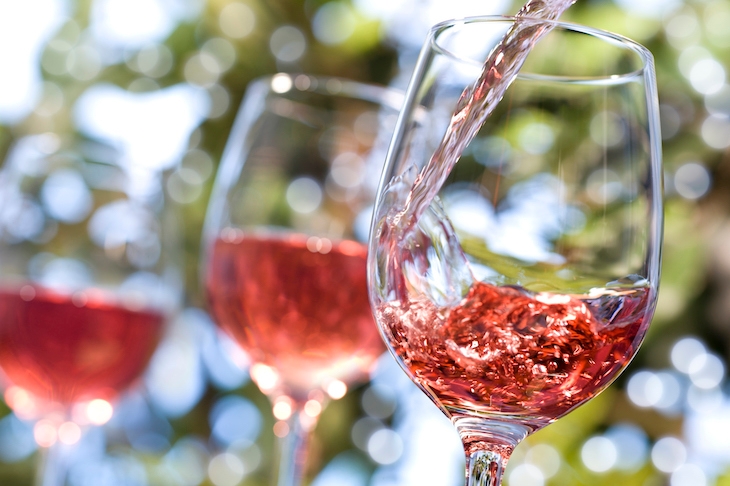This April is the cruellest month, but not in the sense that Eliot intended. Memory and desire are mixed: memory for previous verdant seasons; aching desire for a new one. Instead, we appear to have permanent midwinter spring, with the emphasis on midwinter.
So this might seem to be absolutely the wrong time to drink rosé. Readers may be aware of my considered prejudice, that rosé works well south of Lyon as a wine to drink mid–morning with the last crumbs of croissant. But there is the Domaines Ott, whose pretensions and prices soar well above the ground level of normal Provençal plonk. I had some the other day, in the most depressing environment possible. ‘The doors clap to: the pane is blind with showers.’ It was as if the elements were sneering: ‘You dare to drink rosé, in early April, in England? We’ll learn you.’
The lesson failed. Clos Mireille, from Ott, was a prejudice diffuser. By any standards, this is a serious wine. It has plenty of fruit, but also structure and length. I drank a 2016. Though we were stopping short of infanticide, the wine was barely ready. I would like to taste it in future years, for the evolution will be interesting. As a food companion, it will stand up to something a lot more serious than croissant shards.
Youth and evolution: I have been hearing a lot lately about the 2005 clarets. There seems to be a consensus that anything much above Cru Bourgeois is too young to drink, and that to be ready for dinner, even the minor wines need decanting at breakfast. That said, there is no anxiety among the experts. A lot of the 1975s went from extreme youth to extreme old age without an intervening phase. No one thinks that the 2005s will suffer a similar fate. They are merely sleeping peacefully and will awaken joyfully. But they are not yet ready for a fairy prince with a corkscrew.
This was especially true of the Bahans Haut-Brion, as the second wine of Haut-Brion used to be named, until it was re-christened Le Clarence de Haut-Brion, after the great Clarence Dillon. I remember tasting the ’05 in 2010, and deciding it was full of promise but needed another five years. It was already depressingly expensive. Last week, the promise was even more apparent, as was the need for time, as was the expense. The Bahans had been opened for two hours: not nearly long enough. It still needs another five years. And as for price: approaching £1,000 a case if you can find it.
Prices of that magnitude raise a philosophical question, hitherto avoided in this column. At what point does it become absurd to spend a lot of money on a case of wine? Suppose the alternative were a weekend in Venice, or a painting? Surely either would be preferable? I am told that because of the idleness of the modern housewife, addicted to her dishwasher, a late 18th-century Coalport dinner service is now as cheap as chips. How much wine would one of those be worth? There are two answers to that question. The first is tough-minded and sounds philistine: it depends on how rich you are. The second opens the casement to romanticism. We should not under-estimate the cultural potency of a great wine. I have just helped to drink a 1995 Léoville Barton. A bottle like that trails clouds of glory. It acts as a communion wine, consecrating a mystical union between the drinkers and old high European civilisation.
There is one way of avoiding the relative value question: find good wines from a lesser year. I have been lucky enough to drink a number of 2004s recently. None disappointed. The Léoville Barton, the Pontet-Canet and the Batailley were excellent. Lesser names, jolly good — and they were all ready. To conclude: Domaines Ott in anticipation of summer — proper claret as a consolation for the season’s delay.






Comments